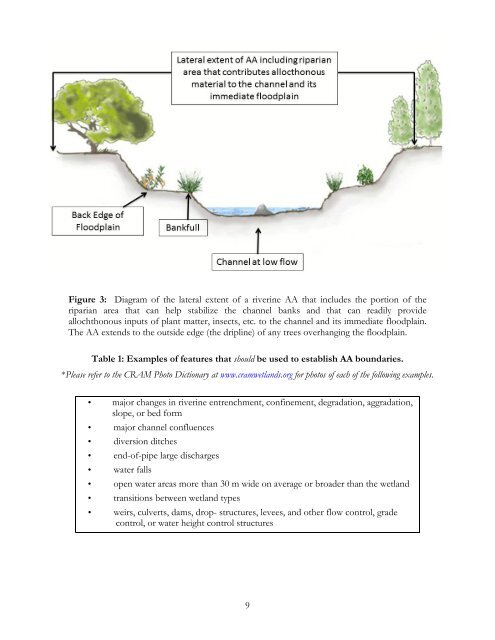Create successful ePaper yourself
Turn your PDF publications into a flip-book with our unique Google optimized e-Paper software.
Figure 3: Diagram of the lateral extent of a riverine AA that includes the portion of the<br />
riparian area that can help stabilize the channel banks and that can readily provide<br />
allochthonous inputs of plant matter, insects, etc. to the channel and its immediate floodplain.<br />
The AA extends to the outside edge (the dripline) of any trees overhanging the floodplain.<br />
Table 1: Examples of features that should be used to establish AA boundaries.<br />
*Please refer to the CRAM Photo Dictionary at www.cramwetlands.org for photos of each of the following examples.<br />
• major changes in riverine entrenchment, confinement, degradation, aggradation,<br />
slope, or bed form<br />
• major channel confluences<br />
• diversion ditches<br />
• end-of-pipe large discharges<br />
• water falls<br />
• open water areas more than 30 m wide on average or broader than the wetland<br />
• transitions between wetland types<br />
• weirs, culverts, dams, drop- structures, levees, and other flow control, grade<br />
control, or water height control structures<br />
9















